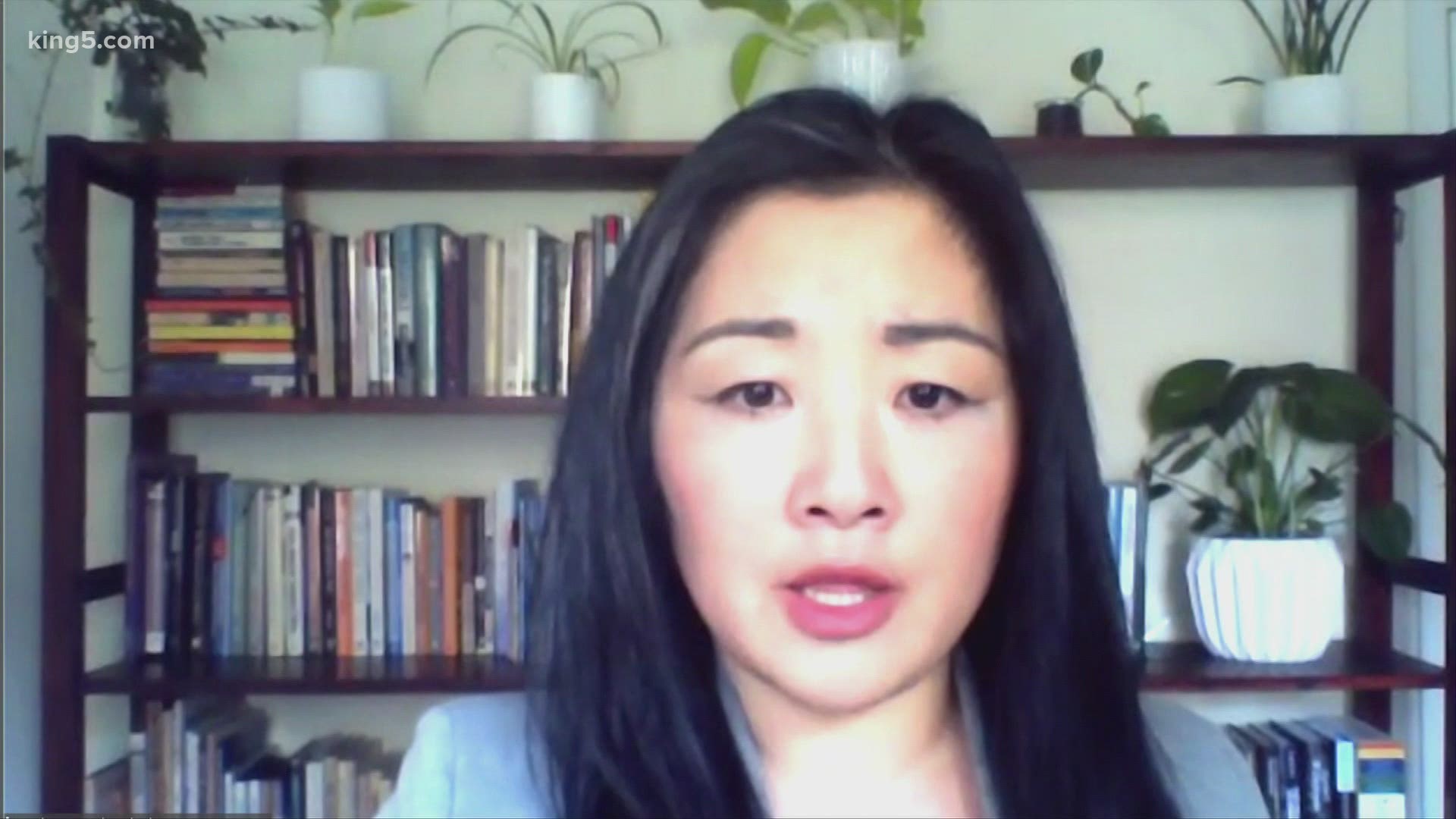SEATTLE — The pandemic’s affects are hitting some homes harder than others. Rates of abuse and neglect are higher in households shouldering the economic burden of the pandemic.
The ongoing socio-economic stress of the pandemic, and lack of support systems many parents rely on, intensifies the problem. While parents may feel the stress, they’re not alone. Children, including babies and toddlers, are impacted too.
Haruko Watanabe, director of the Infant and Childhood Mental Health Program at Navos, spoke with KING 5 about how to help the littlest ones cope stress and trauma.
Babies remember trauma
Infants, toddlers, and young children carry memories of trauma and adverse experiences, said Watanabe. These experiences can include violent episodes in the home or outside of it, big fights between parents, abuse – physical, verbal and sexual, as well as neglect. These traumatic experiences live in our bodies. Even when we can’t verbalize it, or remember the experiences later, our bodies carry the memories of stress.
Babies and young children who have experienced trauma might shut down. They may be very difficult to soothe and they may be very fearful of any number of experiences, said Watanabe.
If you observe child abuse, please report it to the Washington State Department of Children, Youth and Families.
ACE = Adverse Childhood Experiences
Today, we measure adverse childhood experiences using the ACEs tool. ACEs was first identified in the 1980s. A doctor studying obesity in adults noticed nearly all his patients reported significant childhood trauma.
After sharing his initial findings, Kaiser Permanente and the Centers for Disease Control and Prevention (CDC) funded a larger study. In 1997, the CDC and Kaiser published the ACEs study. In the study, doctors measured adverse childhood experiences and their correlation to major health problems like heart disease, diabetes, and obesity.
Since about the year 2000, mental health professionals have widely accepted the ACEs study as a guiding tool. Measuring ACEs helps mental health professionals support parents and young children.
Take the ACEs quiz
The ACEs quiz allows you to assess your own adverse childhood experiences. It can help you gain awareness about past traumas and become more mindful of your behavior today.
Adverse childhood experiences are common
Adverse childhood experiences are very common. There is an ACEs score of zero to 10. The higher your score, the higher your chances are of dying young and suffering negative health outcomes. Young children are especially sensitive to repeated stress activation because their brains and bodies are developing. It’s why we must work to prevent and intervene early, Watanabe said.
In addition to the original ACEs definition, some leaders in the field are offering another way to think about ACEs. They are including adverse community experiences to acknowledge the damaging impact of racialized violence and discrimination. So, when we talk about adverse childhood experiences, we now include historical trauma people of color have within communities.
Healthier children through prevention and intervention
To help foster healthier childhoods and family dynamics, we have to understand what babies and all children need. Watanabe said all babies and children need:
- To feel safe
- To feel loved
- To feel protected
To feel safe, loved, and protected your children need your undivided attention. Watanabe recommended that all parents put down their phones, stop what they are doing, and spend at least five to 10 minutes each day being with each child. She said keeping things simple is good for both parent and child.
- Play a game together
- Read a book
- Sing a song
- Dance and be silly
Watanabe also wanted parents to know how important greetings are to babies, toddlers, and young children. Because children under age six don’t really understand time, parents have the opportunity to support bonding with their greetings.
“Hello and goodbye are a really big deal for babies,” advised Watanabe. “Find a way to make it special for them.”
Watanabe recommended using your voice and hand gestures to convey love. Creating routines around hellos and goodbyes helps your baby or young child feel safe and protected. Looking for ideas? Watanabe said the parents she works with use these kinds of actions:
- Have a little wave just for your child
- Say the same thing each time
- Use hugs, kisses, and gentle touch
- Your tone-of-voice tells your child that your words are meant for them
Advice for parents who want to reduce stress in the home
Watanabe wanted all parents to remember that your history is not your destiny. If you have survived trauma and need support with parenting, Wa211.org is an excellent resource. There you can be connected to community resources, parenting classes, and counseling services.
If your child is acting out or having trouble, receive them with compassion and curiosity, Watanabe said. Often children who act out are punished or criticized. Such punishment can be more harmful than helpful to a child. Rather, Watanabe would like more parents to be open to understanding what happened to the child. She said that’s where her work begins.
“We often start by asking what happened to you,” said Watanabe. “When we know what happened, we can identify where stress and trauma occurred. It often explains or at least informs behavior.”
If your child continues to act out or have problems, get intervening care. Intervening early is the best and often the easiest way to help your child heal. Navos and a number of behavioral health organizations can help parents and children resolve past trauma and learn new behaviors.
Interested in reading with your child about behavioral health?
Watanabe recommended the Piplo books. She and the Navos team of infant and early childhood mental health experts often read these stories with young children and share them with parents.

